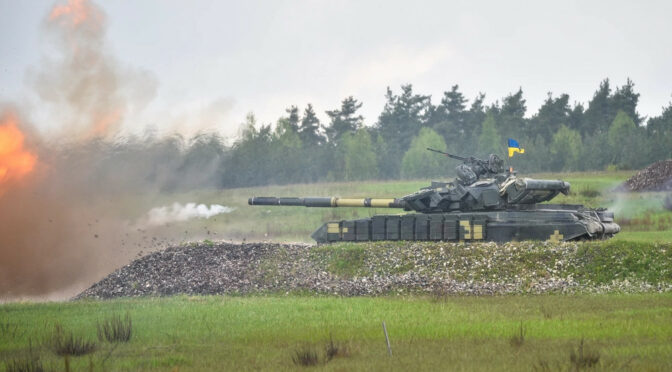Article published in The Daily Telegraph, 26 February 2022. © Richard Kemp
We see uncanny similarities between Russia’s aggression in Ukraine today and Germany’s invasion of Czechoslovakia in 1938, both encouraged by weakness and appeasement in western Europe. British military preparedness in the 1930s and today are also starkly similar. After the First World War our forces were neglected despite a rising threat from Germany, to the extent they were unable to resist the Nazi scything through France. Since the end of the Cold War, we have greedily spent the ‘peace dividend’ on welfare and other projects while degrading our armed forces in the face of growing threats from Russia and China.
Putin’s invasion is withering confirmation of the misjudgements many of us recognised when we read with disbelief the defence review last year that compounded the damage. The navy and airforce were relatively unscathed but the army was devastated, cut by almost 10,000 to just 72,500 – less than half the number Putin lined up on the Ukraine border.
Even as Russian troops were assembling last year – including 1,200 tanks – the MOD was preparing to reduce our meagre tank force from 227 to 148. Tanks can’t fight without infantry alongside in armoured combat vehicles. Ours were due to be upgraded but are now being scrapped altogether, eventually to be replaced by vehicles without comparable potency. With eight former infantry battalions cut in half and assigned to train foreign forces, we will only be able to field around 12,000 infantry – the men that always bear the brunt of the fighting. Even this paltry figure is optimistic; never in my 30 years’ service was the infantry ever manned to its authorised strength due to a dysfunctional recruiting system.
Meanwhile our war stocks of replacement vehicles, weapons and ammunition have been stripped bare by an ill-judged imitation of industry’s ‘just-in-time’ policies – not for efficiency but to save money. We sent only 2,000 anti-tank missiles to Ukraine and I suspect we don’t have many more to spare.
Defence analyst Nicholas Drummond wrote last year: ‘Given severe resource constraints, the Army had to choose between a larger force modernised to a lesser degree, or a small force modernised more extensively. It chose the latter.’ Cutting-edge technology including satellites, artificial intelligence, cyber warfare and drones are all vital to fight against enemies like Russia. They are also needed to operate effectively alongside the US, but so is critical mass. None of these capabilities are a substitute for hard combat power such as we are seeing smash its way through Ukraine today. Defence Secretary Ben Wallace wrote in his preface to the defence review: ‘It is always tempting to use the shield of sentimentality to protect previously battle-winning but now outdated capabilities.’ He meant tanks and armoured infantry, which as Putin will prove are not outdated and are still battle-winning.
Putin’s territorial ambitions will not end with this war. His eyes are on the Baltic states which he also sees as illegitimate entities. If he sends ‘peacekeeping’ troops into Estonia, Latvia or Lithuania, or other Nato member countries in the east, we are under treaty obligation to defend them and win. That means outmatching Russia in mass as well as technology and the penny-pinching we have so far indulged in will not suffice. This should be an allied effort but Britain and the US will bear the brunt, even though France and Italy have significantly larger armies than we do.
Like the defence cuts in the 1920s and 30s, our forces have been slashed not for any genuine strategic rationale but to save money. As the people of Ukraine are learning, there is nothing more important for any society than defence. If it is inadequate, everything else collapses. When the time comes – as history teaches us it inevitably will – we must fight with the army we have, not the one we regret not having. It is time to put our hands in our pockets to rapidly rebuild our forces back to the levels of the 1980s.
Image: US Department of Defense/Spc. Nathanael Mercado/DVIDS

